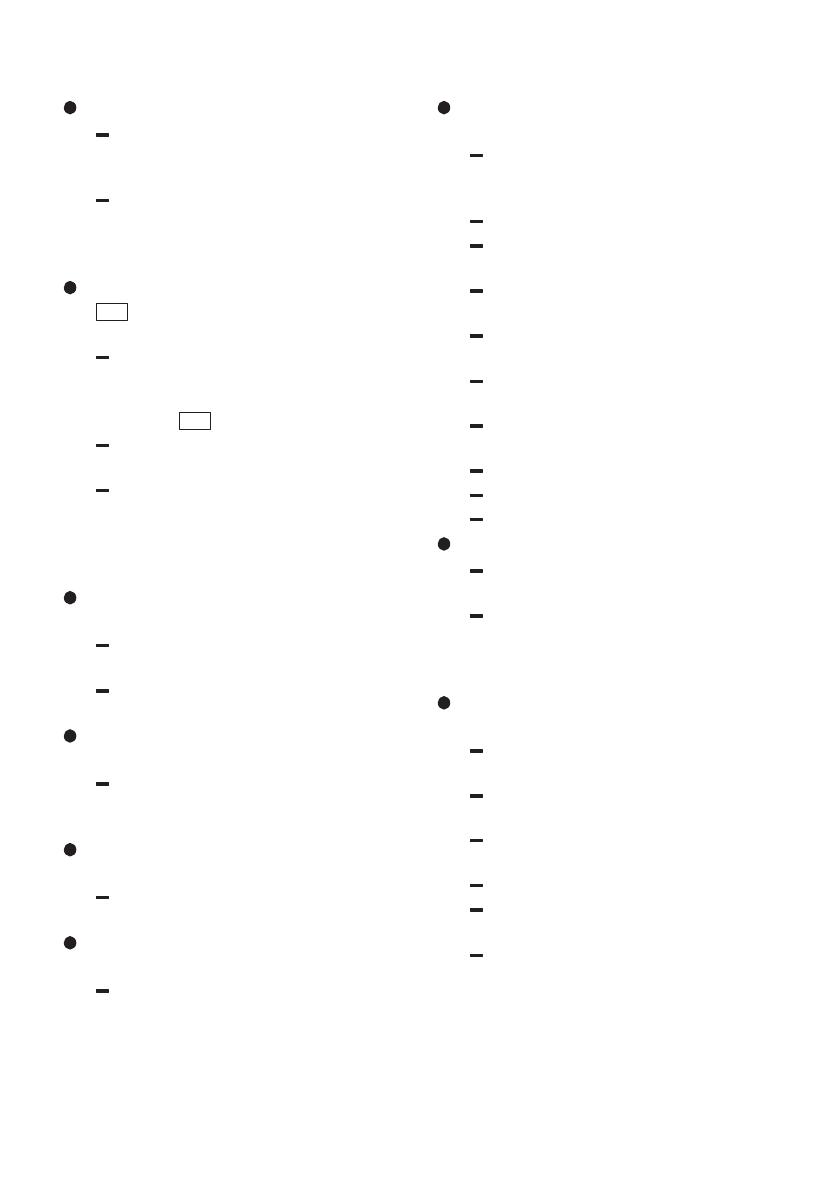
en
68
... during washing
Unusual amount of foam is created
Normal washing up liquid has
been poured into the rinse-aid
container.
Remove any spilled rinse aid with
a cloth as it could otherwise lead
to excessive foaming during the
next washing cycle.
Programme progress indicator
5 flashes and the programme
stops running
Programme was interrupted.
Continue the programme by
pressing the START/STOP
button
8 .
The appliance door is open.
Close the door.
Programme selector was rotated
to an actuating position which has
not been stored with a programme.
Rotate the programme selector
back to the desired programme.
Appliance stops suddenly while
washing is taking place
Cut in electricity supply to
appliance.
Water supply has been
interrupted.
Knocking sound can be heard
while washing is taking place
A spray arm is knocking against
the dishes inside the appliance.
Rattling sound can be heard while
washing is taking place
Crockery has not been stacked
properly inside the appliance.
Knocking sound coming from inlet
valves
This is caused by the way the
water pipes have been laid and it
has no effect upon the way the
appliance functions. There is no
remedy for this.
... with the dishes, cutlery, etc.
Remnants of food are stuck to the
dishes, cutlery, etc.
Dishwasher was not loaded
properly. Jets of water could not
reach all parts of the dishes, etc.
Too many items in the rack.
Items in the rack were touching
each other.
Not enough detergent was added
to dispenser.
Selected wash programme was
not intensive enough.
Rotation of spray arm was
obstructed by dish, etc.
Nozzles in spray arm are blocked
by remnants of food.
Filters are blocked.
Filters have been incorrectly fitted.
Waste-water pump is jammed.
Plastic items are discoloured
Not enough detergent was added
to dispenser.
Detergent has insufficient
bleaching properties. Use a
detergent containing a chemical
bleaching agent.
White stains are left on crockery,
glasses have a milky appearance
Not enough detergent was added
to input compartment.
Amount of rinse-aid was set too
low.
Although water is quite hard, no
salt has been put in appliance.
Water softener was set too low.
Lid on salt container is not
screwed tight.
If you used a phosphate-free
detergent, try a detergent
containing phosphates and
compare results.



















